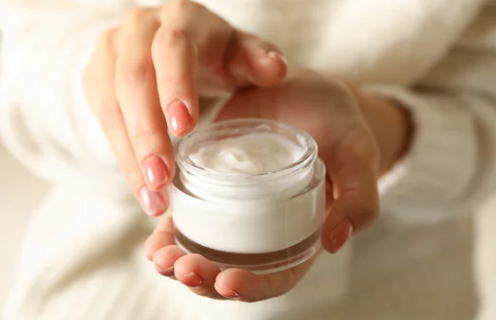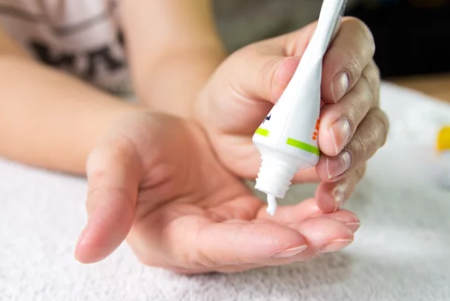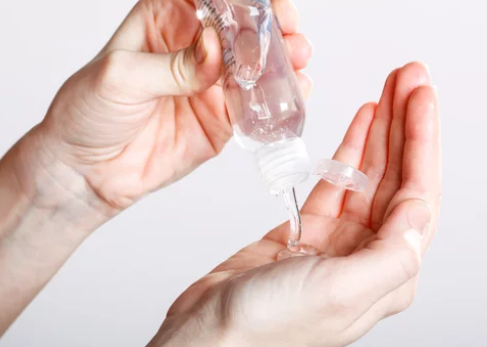People often see both creams and ointments on pharmacy or skincare shelves. In pharmacies, they are common forms for delivering medicines to treat skin problems or relieve symptoms. For cosmetics, they can improve skin conditions. The two forms look similar, but their composition and texture lead to very different effects.
What is a cream?

A cream is a smooth and light topical product. It is made mainly from a mixture of water and oil. It features a soft and non-greasy texture that absorbs easily into the skin. Most creams are made as an emulsion. In this way, small droplets of oil are mixed with water with stabilizers or emulsifiers. They often include preservatives to prevent bacterial growth, since the high water content can allow microbes to form.
In skincare and medicine, creams are widely used for conditions such as acne, eczema, and rashes. The main advantage of creams is that they spread easily and leave little residue on the skin. It makes them comfortable for daily use. However, because they contain more water, they may dry out faster. Then people need to apply more often to maintain the same effect.
What is an ointment?

An ointment is a thick, oil-based topical product. It is designed to protect and heal the skin. An ointment is made mostly from fats and oils. It can stay on the surface longer than a cream. The common ingredients to make ointments include petrolatum, mineral oil, and lanolin. They help form a barrier that locks in moisture and protects the skin from air or bacteria. Unlike creams, ointments contain little or no water, so they do not need many preservatives.
Ointments are often used for dry, cracked, or damaged skin. They are also commonly used to treat burns, wounds, and skin conditions that require deep hydration. Ointments feature a strong ability to retain moisture. They could also keep the treated area soft and offer good protection for a long time. However, they have a thick and greasy texture. It can feel heavy or sticky, especially on large areas or in warm weather.
Three differences between ointments and creams
Composition
The main difference between creams and ointments is their base ingredients. Creams contain more water and less oil, which makes them lighter and easier to spread. The water in the product helps the skin feel cool and refreshed after application. Creams are often used not only for moisturizing but also for treatment. Many medicated creams, such as hydrocortisone, antifungal, or antibiotic creams, help reduce inflammation, treat infections, and relieve irritation.
Ointments, on the other hand, are mostly made of oil or petrolatum. This high oil content creates a strong barrier on the skin that helps prevent moisture loss. Because of this, ointments are better for dry or cracked skin.
Texture
Creams have a soft and smooth texture. Their appearance is usually white or milky, and they feel light on the skin. Creams have a good mix of water and oil. It makes them feature a light texture, suitable for areas like the face or skin folds. In these areas, quick absorption and comfort are important.
Ointments are much thicker and more greasy, with a shiny appearance. This heavy texture helps protect dry or damaged skin and keeps moisture locked in. It is useful for burns, wounds, or chronic skin conditions. Because of their greasiness, ointments are often chosen for affected areas that need stronger protection.
Absorption rate
Creams are absorbed by the skin more quickly because they contain a higher amount of water. The light texture allows active ingredients to reach the skin surface faster. This makes creams useful for conditions that need quick relief, such as mild rashes or irritation.
Ointments absorb more slowly because their oil-based structure stays on the skin surface longer. The thick layer lets the medicine work gradually over time. This slow absorption provides lasting relief and protection, especially for chronic or severe skin problems.
How do ointments and creams compare to lotions and gels?
Ointments and creams share some similarities with lotions and gels, but they also differ in texture, composition, and how they work on the skin.

Lotions are the lightest among the four. They contain the most water and the least oil. So they have a thin and runny texture. This makes them easy to spread over large areas of skin, such as the arms. Lotions absorb quickly and leave almost no residue, comfortable in hot or humid climates. However, because of the high water content, they provide less moisture. Moreover, they may not protect very dry or cracked skin as effectively as creams or ointments.
Gels are water-based and have a clear texture. They absorb quickly without a greasy feeling. It makes them ideal for oily or acne skin. Many cooling or anti-acne products use a gel base to deliver active ingredients fast and evenly. Unlike creams or ointments, gels dry to form a thin film. It offers a refreshing and non-sticky sensation but provides little moisture.
You can see the following chart for a clear understanding.
| Form | Ointment | Cream | Lotion | Gel |
| Base Composition | Mostly oil or petrolatum. | Mix of water and oil. | High water content and a small amount of oil. | Water-based with gelling agents. |
| Texture | Very thick, greasy, and shiny. | Smooth, soft, white, or milky. | Thin, fluid, and easy to spread. | Clear, smooth, and non-greasy. |
| Absorption rate | Slow | Moderate to fast | Fast | Very fast |
| Applications | Dry, cracked, or damaged skin, like burns and eczema. | Normal to slightly dry skin, like rashes. | Normal to oily skin or large body areas. | Oily or acne-prone skin |
The end
Both creams and ointments play important roles in skincare and medicine, and each has its own benefits. You can choose the most suitable one based on your needs. If you need cream or ointment packaging machine, Anxine is your good partner. We offer different types of machines to fill and pack creams or ointments. You just tell us your demands, and we will help you match suitable machines quickly. Besides, we have a professional team to assist you in customization for more functions. If you find trouble or need practical maintenance tips after purchasing, just feel free to contact us.